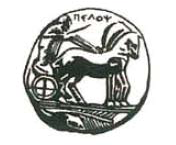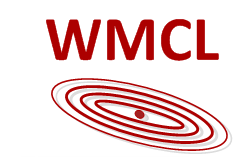Wireless and Mobile Communications Lab
Department of Informatics and Telecommunications
University of Peloponnese
Drone hovering during flight test in the lab.
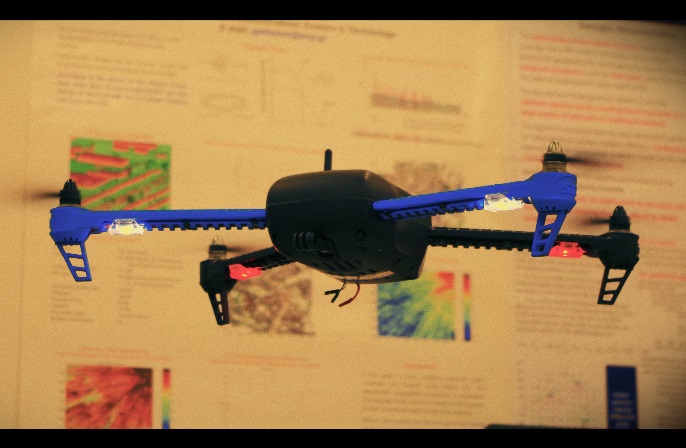
24-09-2015
G.Tsoulos has joined the technical committee of the 5G Research and Technology Conference - 5G SUMMIT.
13-07-2015
The Wireless and Mobile Communications Lab has signed an NDA with Huawei Technologies Dusseldorf GmbH in order to work together towards the dynamic densification of 5G access networks using vehicles.
Wimax dimensioning and cost analysis for the city of Tripolis
Student: Anastassios Chalvatsiotis
Supervisors: George Tsoulos - Dimitra Zarbouti
Completed in: October 2013
Abstract
This thesis focuses on the WiMAX technology and specifically on the dimensioning strategies that can be followed during the first steps of the deployment of a WiMAX network. The dimensioning process is based on the system link budget and the use of the appropriate statistical propagation model. Its output is the number of base stations that are required in order to cover the geographical area where the network will be deployed. The basic steps of the dimensioning process are depicted in the following figure.
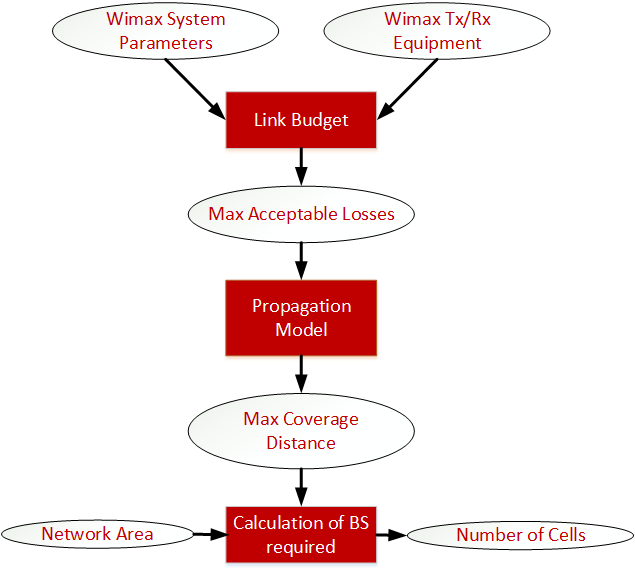
The wimax system parameters used are shown in Table 1, while the SINRmin values for different modulations and code rates in Table 2. The values of Table 2 can be found in [1].
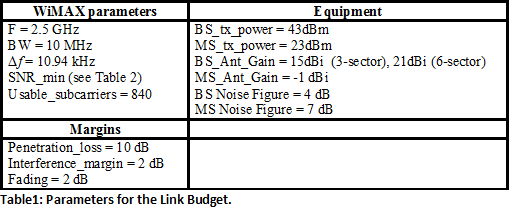

The additional gains from the smart antennas and/or MIMO are considered in the link budget calculations so as the corresponding Max Acceptable Losses are obtained.
In order to estimate the Coverage Range the COST 231 Hata model was used. For instance, in Table 3 the DL and UL coverage ranges for Scenario 1 are shown. An indicative dimensioning for 10MHz channel bandwidth in the area of Tripolis is depicted in Figure 1. The cell radius is 170m, which corresponds to the maximum possible UL coverage range (highlighted value in Table 3). As Figure 1 depicts, Scenario 1 requires 40 cells (120 sectors).
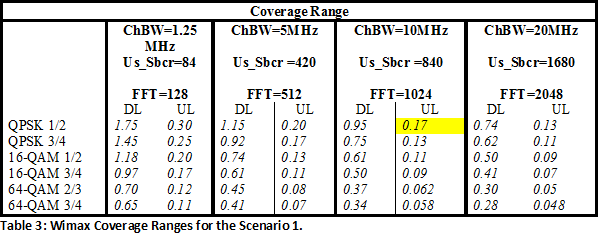
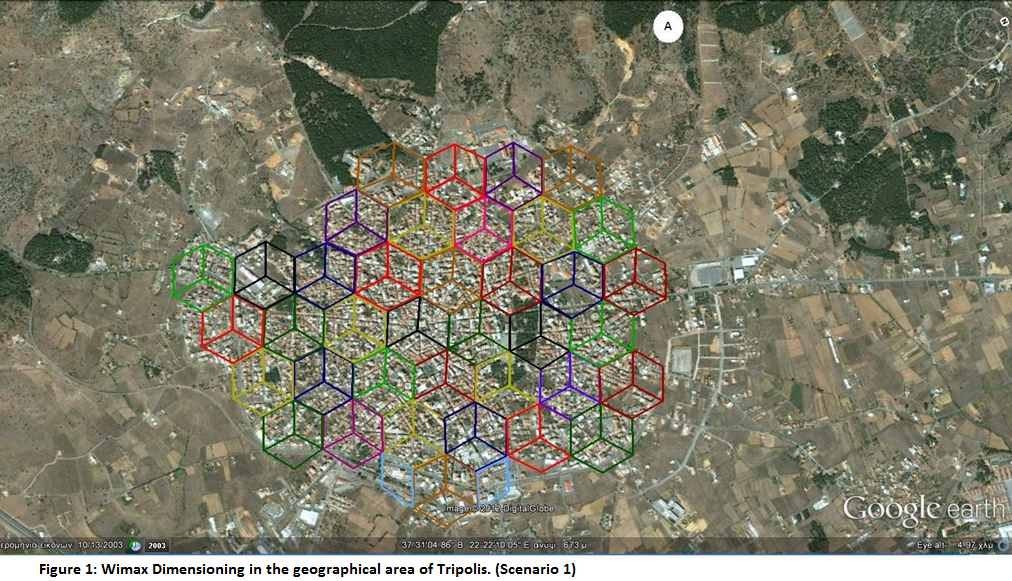
Furthermore, the dimensioning solution for each Scenario is evaluated with respect to the throughput and the cost.
For the throughput evaluation the values of Table 4 found in [2] are used along with wimax user profiles (see Table 5) found in [3]. It is considered that the 67% of users will ask for the Plus Profile, the 23% the Pro profile and the remaining 10% the Lite Profile. This assumption was followed in [3].
For the cost evaluation the approach followed in [4] was adopted.
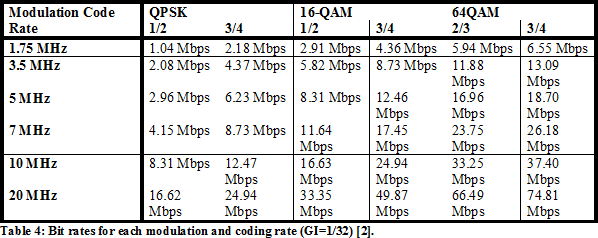

Table 6 summarizes the dimensioning results for the 5 aforementioned Scenarios.
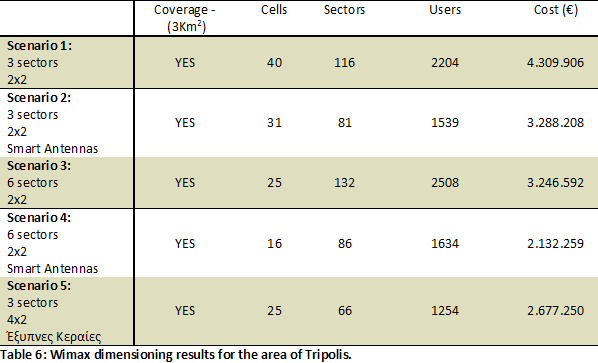
[2] Ioannis Clonos, IEEE 802.16 WiMAX (Network Planning and Dimensioning), BSc Thesis, Department of Science and Communications Technology, University of Peloponnese, 2008. (in greek)
[3] MARAVEDIS Wireless Market Research &Analysis, (2010, November 10). Company Profile & Analysis: Packet One Networks (Malaysia)[Online]. Available: http://www.maravedis-bwa.com/
[4] Business Case Models for Fixed Broadband Wireless Access based on WiMAX Technology and the 802.16 Standard , WiMAX Forum, October 10, 2004.
